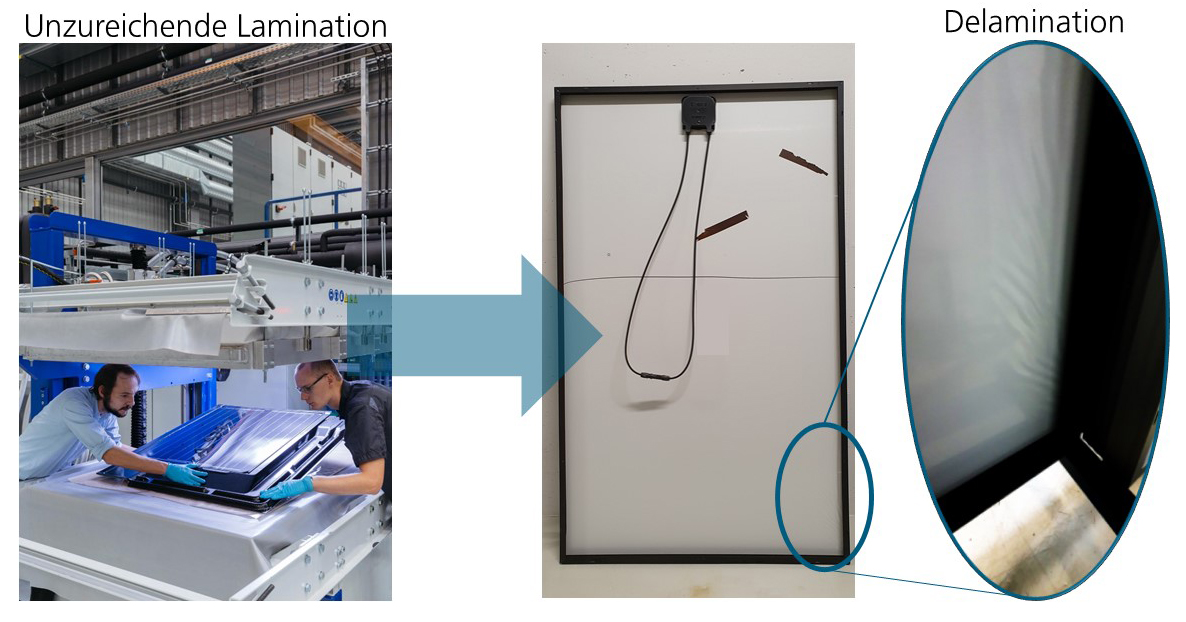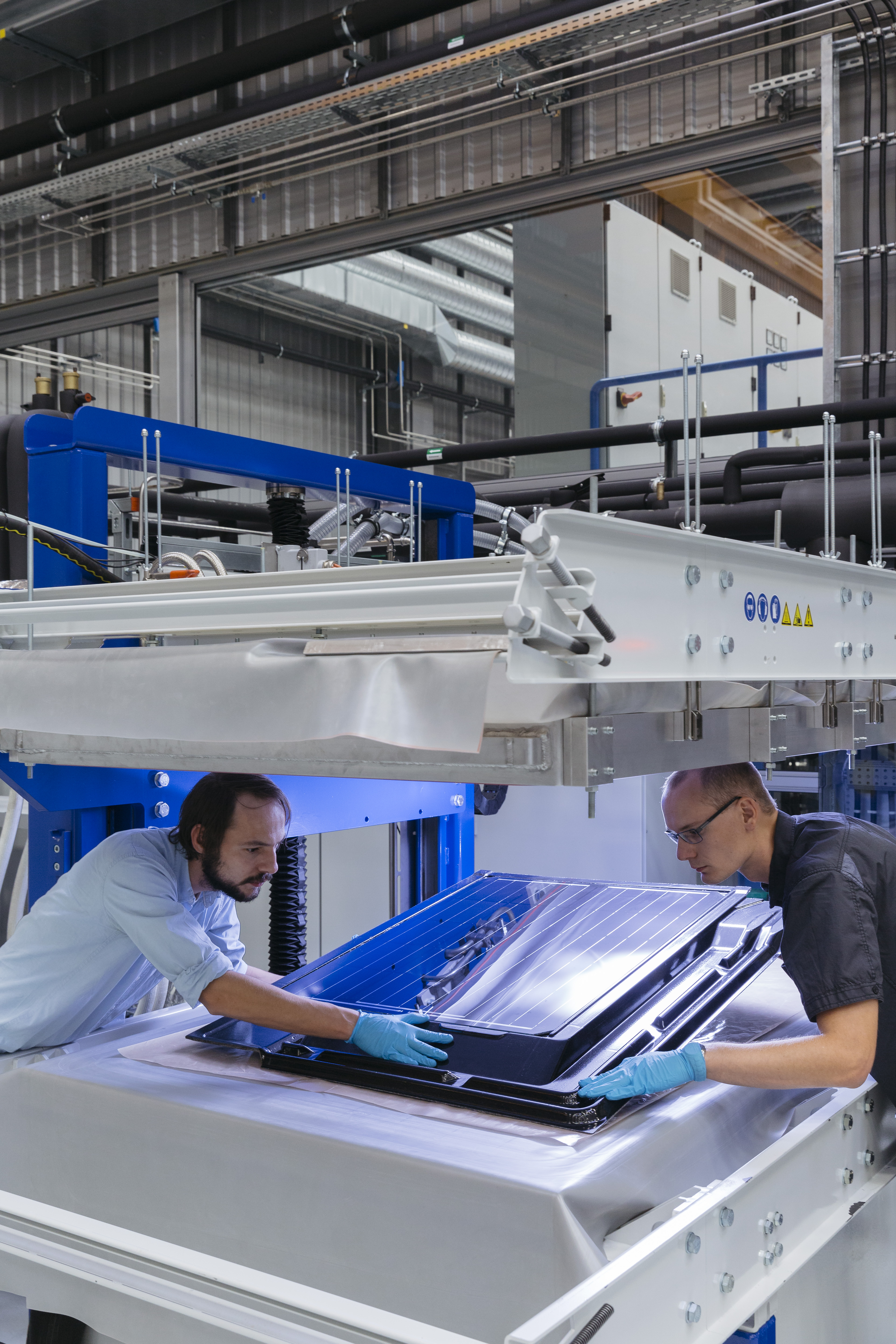Ideal cross-linking degrees for solar modules through optimized quality control
The encapsulation of solar cells is of great importance for the overall performance of a solar module. Only if this has a seamless finish, protection of the solar cells from environmental influences can be guaranteed. In a new project, Fraunhofer Center for Silicon Photovoltaics CSP and its partners are investigating the ideal degree of cross-linking for module reliability in order to increase the stability, reliability of supply, system performance and productivity of photovoltaic systems.
Ideal cross-linking degrees for solar modules through optimized quality control
Currently, manufacturers of photovoltaic modules provide a performance guarantee of 25 years on 80 percent of the output power. This reliability and service life is only achieved if the encapsulation of the solar cells is perfectly processed, thus ensuring protection against external influences. "At points where encapsulation films are insufficiently cross-linked, delamination can occur over time, which impairs the service life of the module. Weakness-free processing is not always successful in production, so any abnormalities can lead to performance losses of a solar module. This violates the product and performance warranty, resulting in high module replacement costs," says Dr. Anton Mordvinkin, who heads the project at Fraunhofer CSP.
To prevent this, the solar cell composite is fixed within a solar module and encapsulated as tightly as possible to achieve maximum protection. For this encapsulation, the composite is enclosed by two films of the composite plastic. Currently, mainly ethyl vinyl acetate copolymer (EVA) is used for this purpose. EVA is transparent, has rubber-like flexibility, good tear strength and aging resistance, and good insulation and barrier properties. Depending on its modification, the material is used for example as a packaging material in households, as granules in toothpastes or in elastic midsoles for shoes. In solar module production, the two EVA films are heated in stages within a lamination process so that the EVA first melts, flows into the cavities between the cells and thus fills them, and then cross-links to achieve long-term structural stability. The degree of cross-linking of an encapsulation film indicates how well this process has occurred and can be characterized, with defective lamination significantly reducing the life of modules.
Currently, too little is known in the industry about the relationship between encapsulation lamination and module lifetime, especially about the local distribution of the degree of cross-linking. The degree of cross-linking of EVA is insufficiently controlled when measured against its importance to module reliability. There is no industry-accepted non-destructive testing technology on the market yet. The only approach currently available is the X Link system from LayTec. This is where the partners in the three-year "EVAplus" project tie in. Fraunhofer CSP is collaborating with Laytec AG, Sunset Energietechnik GmbH, ABO-Wind AG, PI Berlin AG and Anhalt University of Applied Sciences to increase supply reliability, plant performance and productivity by conducting lifetime-relevant tests on the stability of module encapsulation of photovoltaic modules. The existing approach will be further explored with the goal of encapsulation quality control, resulting in a 20 percent reduction in encapsulation anomalies in the field and a two percent increase in a module manufacturer's production yield. The last is to be achieved by increasing the speed through optimized lamination.
Fraunhofer CSP is contributing its expertise in polymer analytics and polymer evaluation to the project, working on issues that contribute to understanding material changes in realistic operating conditions, investigating chemical and micromechanical material properties, and modeling environmental stress-induced aging of laminates, as well as risk assessment of material and process parameter variations. "We use data from field returns, from climatic chamber and weathering tests on specially manufactured test specimens. This allows us to develop a non-destructive measurement technology for a determination of the degree of cross-linking and other polymer film parameters, which at the same time represents an Industry 4.0 approach for field-reliable lamination. However, this requires a result-controlled lamination instead of the currently used time- and temperature-controlled process control. As a result, we want to be able to make better statements about the ideal degree of cross-linking for module reliability," adds Dr. Mordvinkin.

